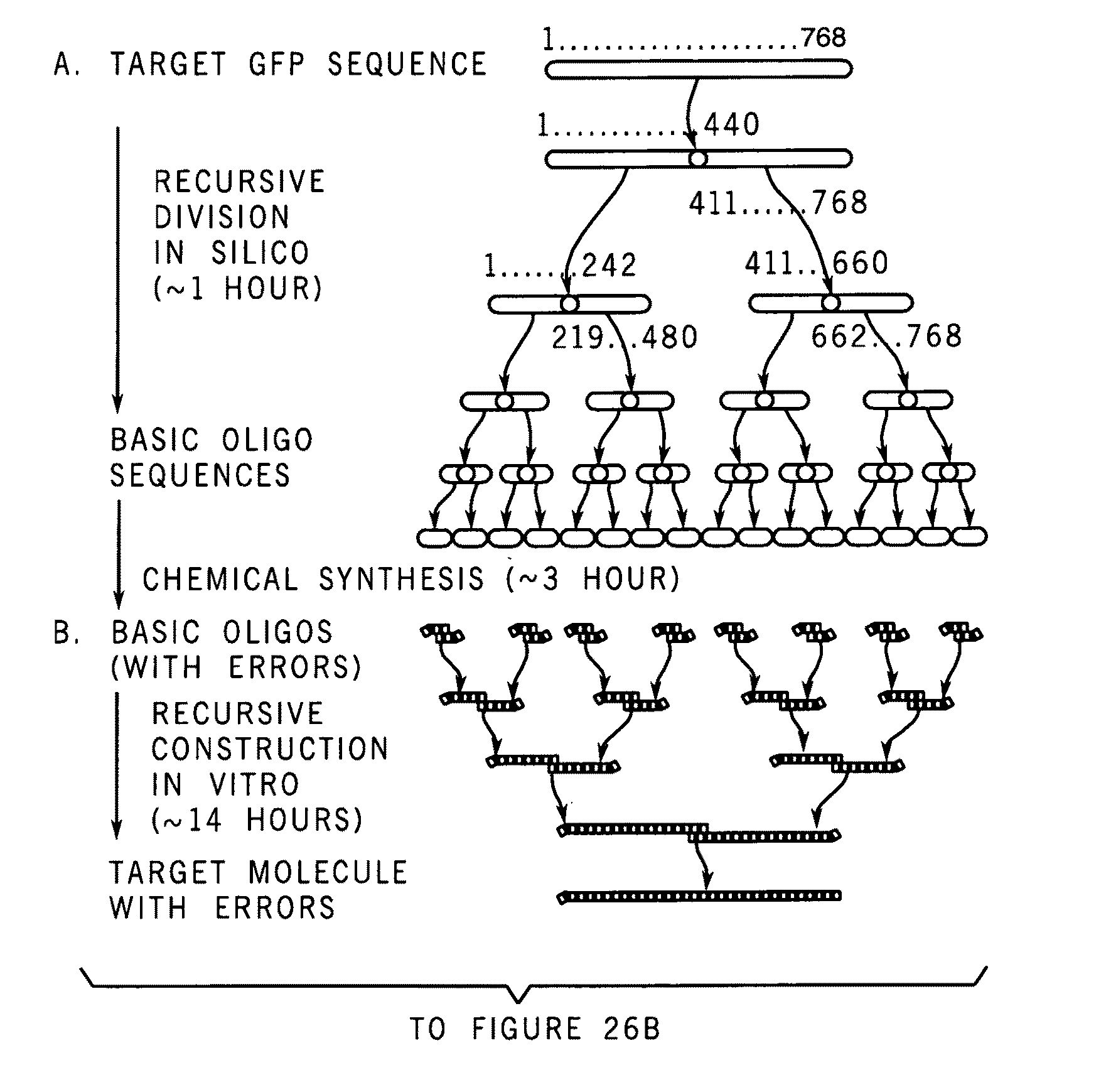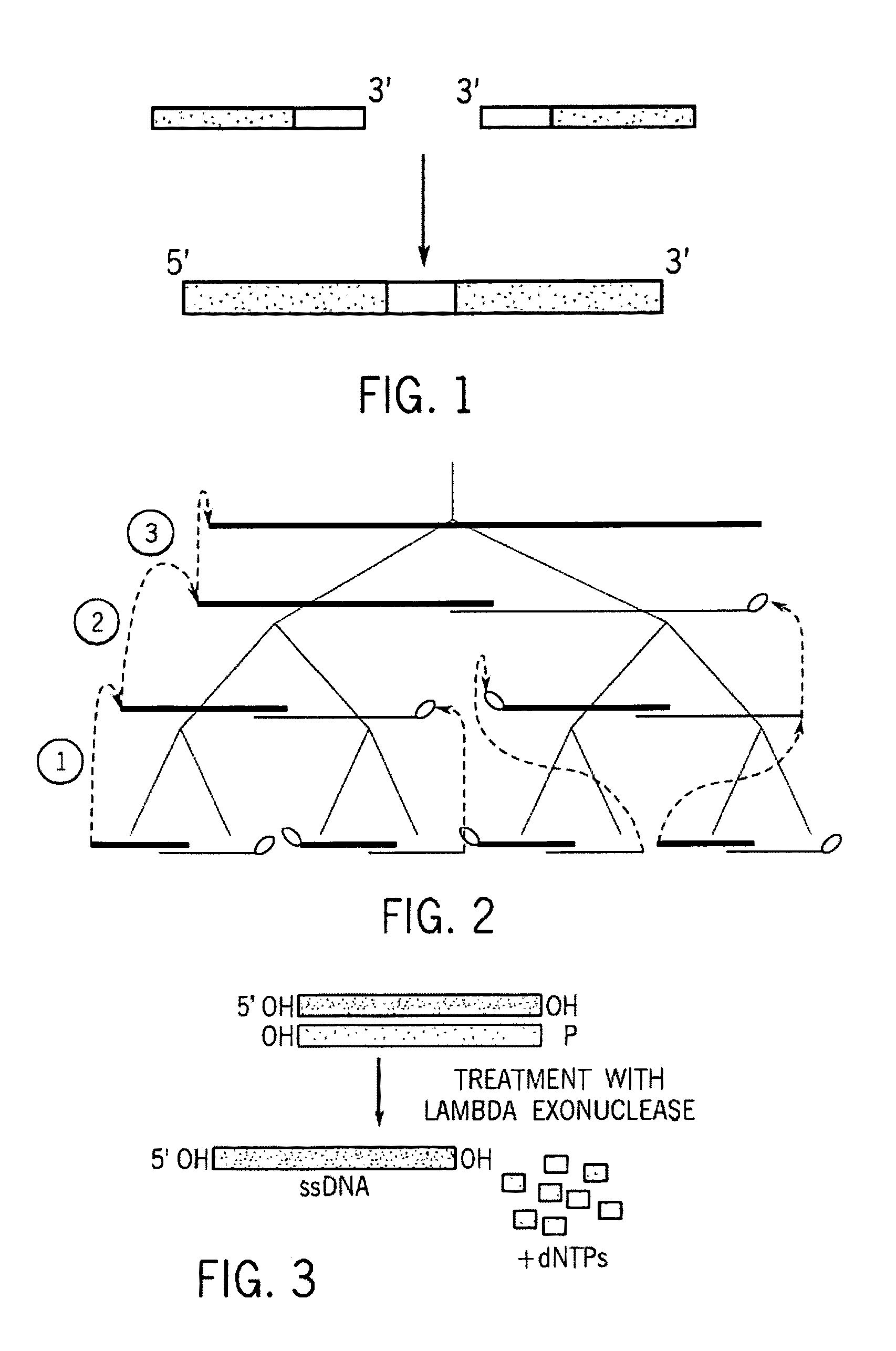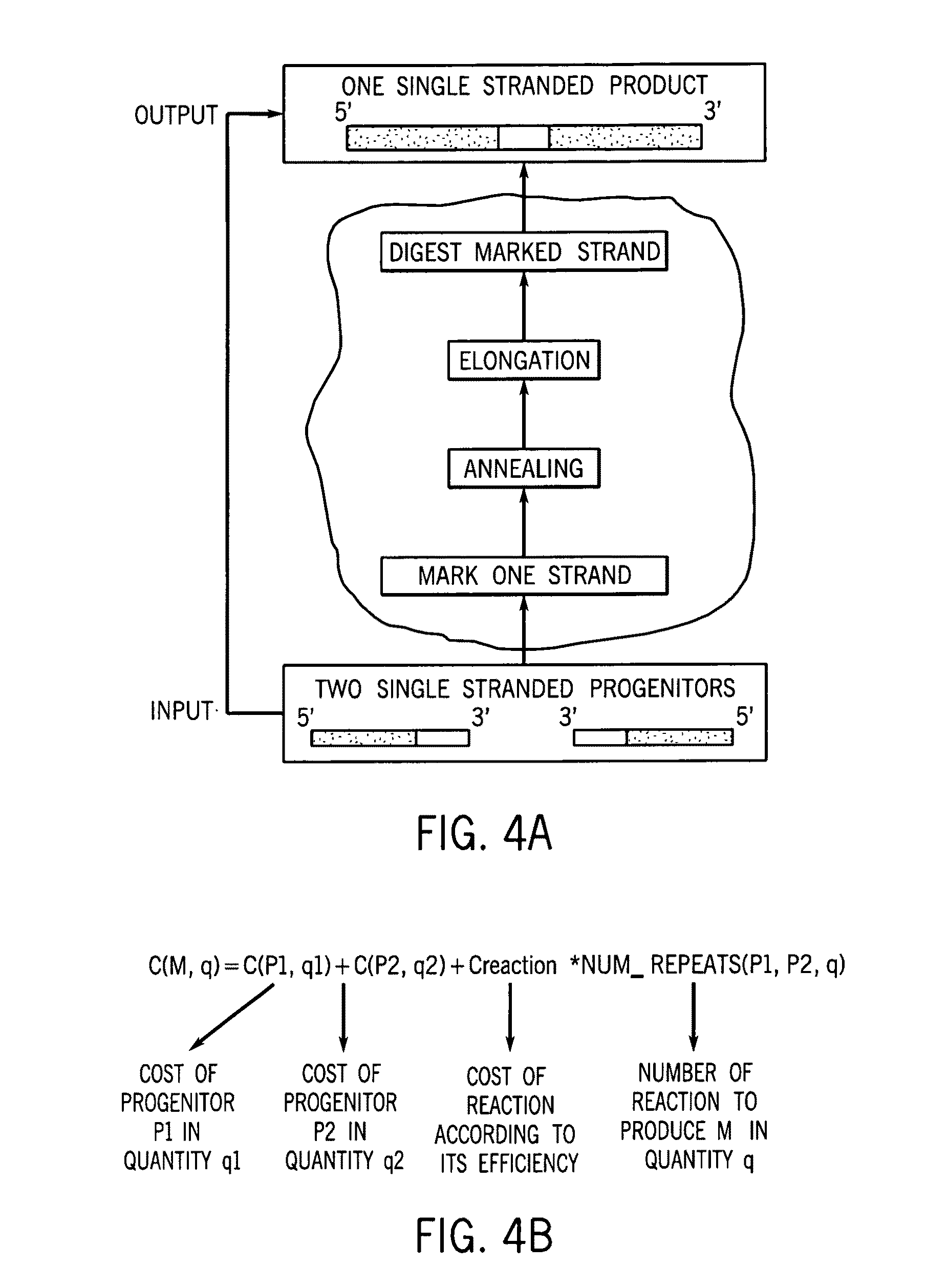Programmable iterated elongation: a method for manufacturing synthetic genes and combinatorial DNA and protein libraries
a technology of synthetic genes and dna, applied in the field of system and method for constructing physical objects, can solve the problems of art not teaching or suggesting art also does not teach or suggest such a method or system,
- Summary
- Abstract
- Description
- Claims
- Application Information
AI Technical Summary
Benefits of technology
Problems solved by technology
Method used
Image
Examples
example 1
D&C Method
[0103]This synthetic method supports synthesis of long DNA molecules or combinatorial DNA libraries in an efficient and optionally completely automated manner.
Description of the D&C-DNA Synthesis Process
[0104]The D&C-DNA synthesis method allows in-vitro synthesis of long DNA molecules or combinatorial DNA libraries, using the Divide and Conquer (D&C) approach.
[0105]D&C is an algorithm design paradigm that works by recursively breaking down a problem into two or more sub-problems of the same type. The sub-problems are optionally and preferably independently solved and their solutions are then combined to give a solution to the original problem. This technique has been applied to many well known problems in computer science. The D&C approach provides at least two potential benefits. First, it can provide a simple approach to solving conceptually difficult problems by reducing the problem size recursively until a trivial base case is reached. Second, in some cases it can subs...
example
DNA Synthesis on a Chip
[0223]DNA synthesized on chips may optionally be used as building blocks in some embodiments of the construction protocol according to the present invention. Release of DNA building blocks from the chip in a controlled manner, such that each and every sequence on the chip can be removed or copied from the chip individually is essential. This can be done by creating a specific “address” for every sequence on the chip. This can be done in different ways, including but not limited to, photo-cleavable moieties on the DNA can be activated and cleaved by light directed to a specific DNA sequence on the chip; chemical cleavage of cleavable moieties on the DNA with directed by printing technology to a specific DNA sequence on the chip; and specific DNA sequences on the chip can be amplified by using a combination of PCR primers that specifically amplify only that sequence from all the sequences present on the chip. Of course any of the above methods could optionally b...
PUM
| Property | Measurement | Unit |
|---|---|---|
| pH | aaaaa | aaaaa |
| pH | aaaaa | aaaaa |
| pH | aaaaa | aaaaa |
Abstract
Description
Claims
Application Information
 Login to View More
Login to View More - R&D
- Intellectual Property
- Life Sciences
- Materials
- Tech Scout
- Unparalleled Data Quality
- Higher Quality Content
- 60% Fewer Hallucinations
Browse by: Latest US Patents, China's latest patents, Technical Efficacy Thesaurus, Application Domain, Technology Topic, Popular Technical Reports.
© 2025 PatSnap. All rights reserved.Legal|Privacy policy|Modern Slavery Act Transparency Statement|Sitemap|About US| Contact US: help@patsnap.com



